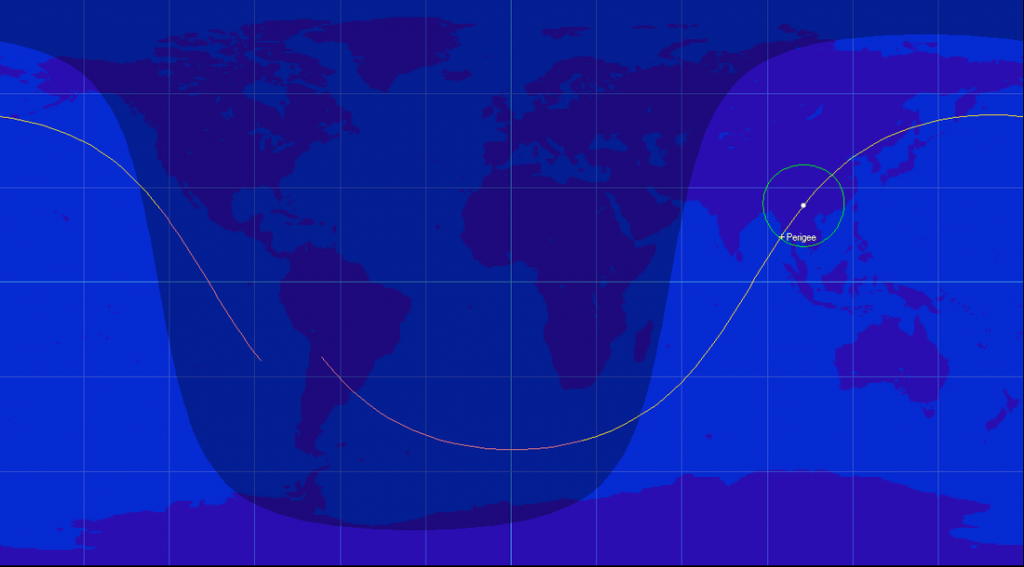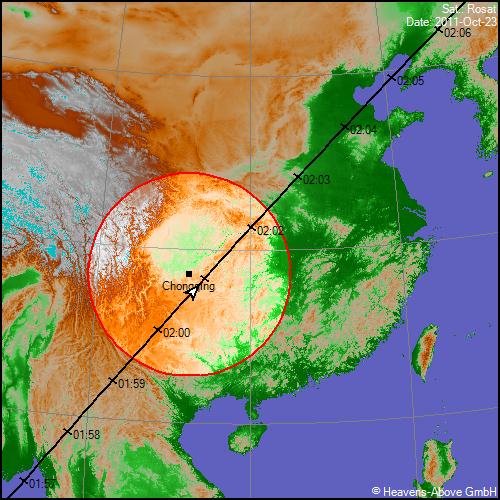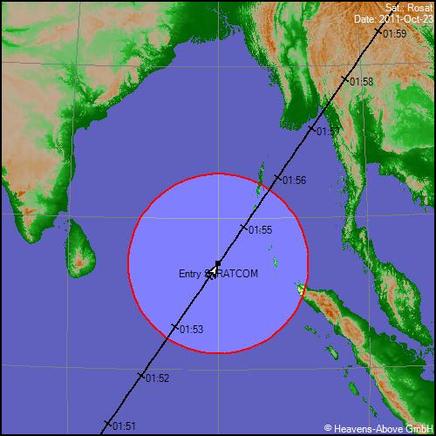
According to German Aerospace Center officials, the German Roentgen Satellite (ROSAT), which reentered Earth’s atmosphere on October 23 between 1:45 and 2:15 UTC, broke up and fell into the Bay of Bengal, east of India. “I don’t think that we’ll have a confirmation of any sort today,” said Andreas Schuetz, spokesman for the German Aerospace Center.
According to Apaceflight101, the satellite was passing over the Indian Ocean and parts of Asia (Myanmar and China). Estimations from the U.S. Strategic Command indicate an Entry time of 1:50 UTC +/- 7 Minutes, which would put the satellite in the Indian Ocean away from China. So far, no damage to people or property from falling debris has been reported.
The 2.7 tons satellite was expected to release about 30 large chunks, for a total of 1.7 tons. The reasons for this unusual mass of debris is the design of the satellite, an X-Ray telescope whose instrument needed to be heat resistant.
You can see some pictures of the ROSAT satellite taken from the ground by Ralf Vandebergh. Also recommended, “Has Anyone been Hit by Space debris?” In the video, below, a reconstruction of the reentry and disintegration of the satellite.





















































































































![A trajectory analysis that used a computational fluid dynamics approach to determine the likely position and velocity histories of the foam (Credits: NASA Ref [1] p61).](http://www.spacesafetymagazine.com/wp-content/uploads/2014/05/fluid-dynamics-trajectory-analysis-50x50.jpg)



Leave a Reply